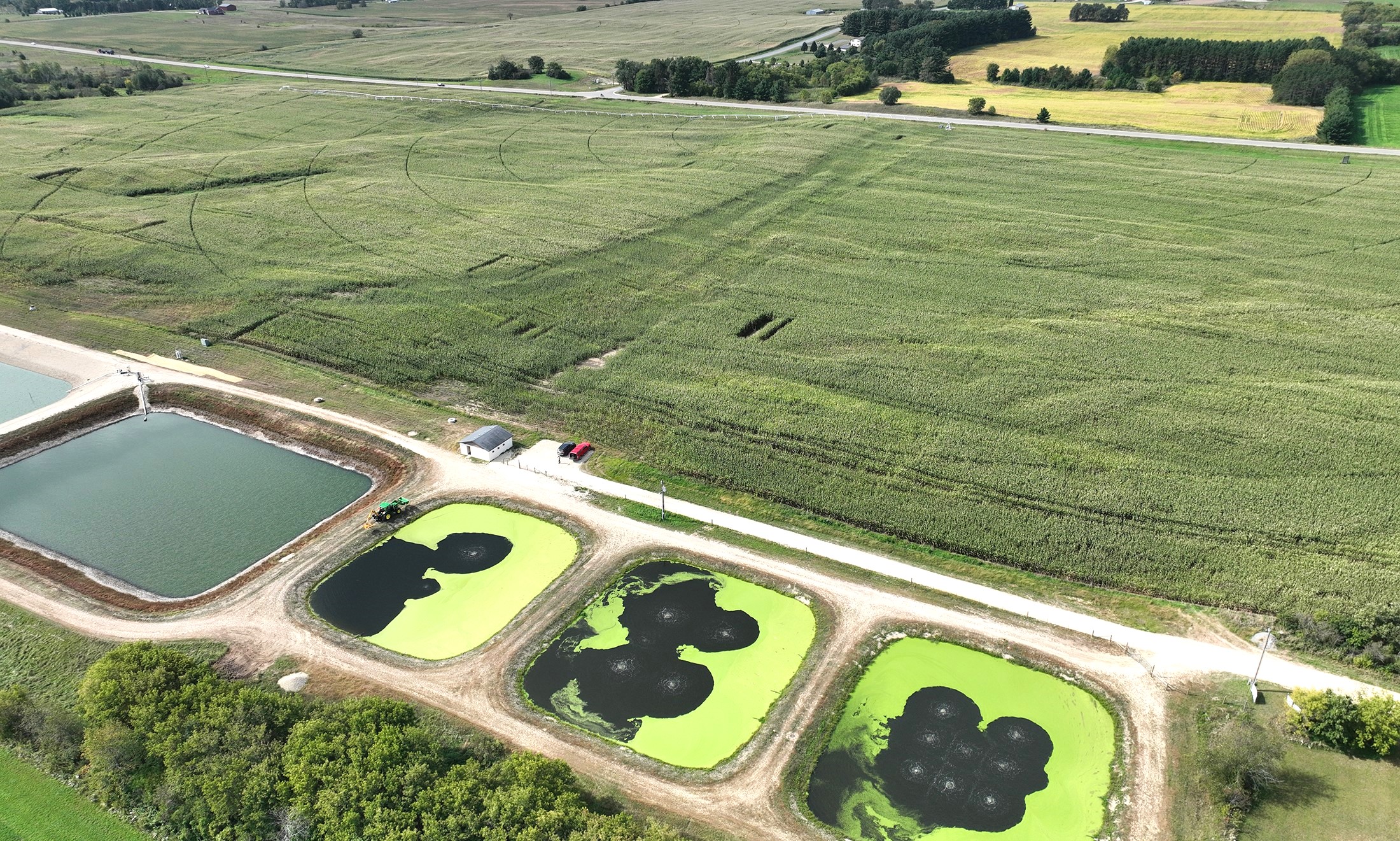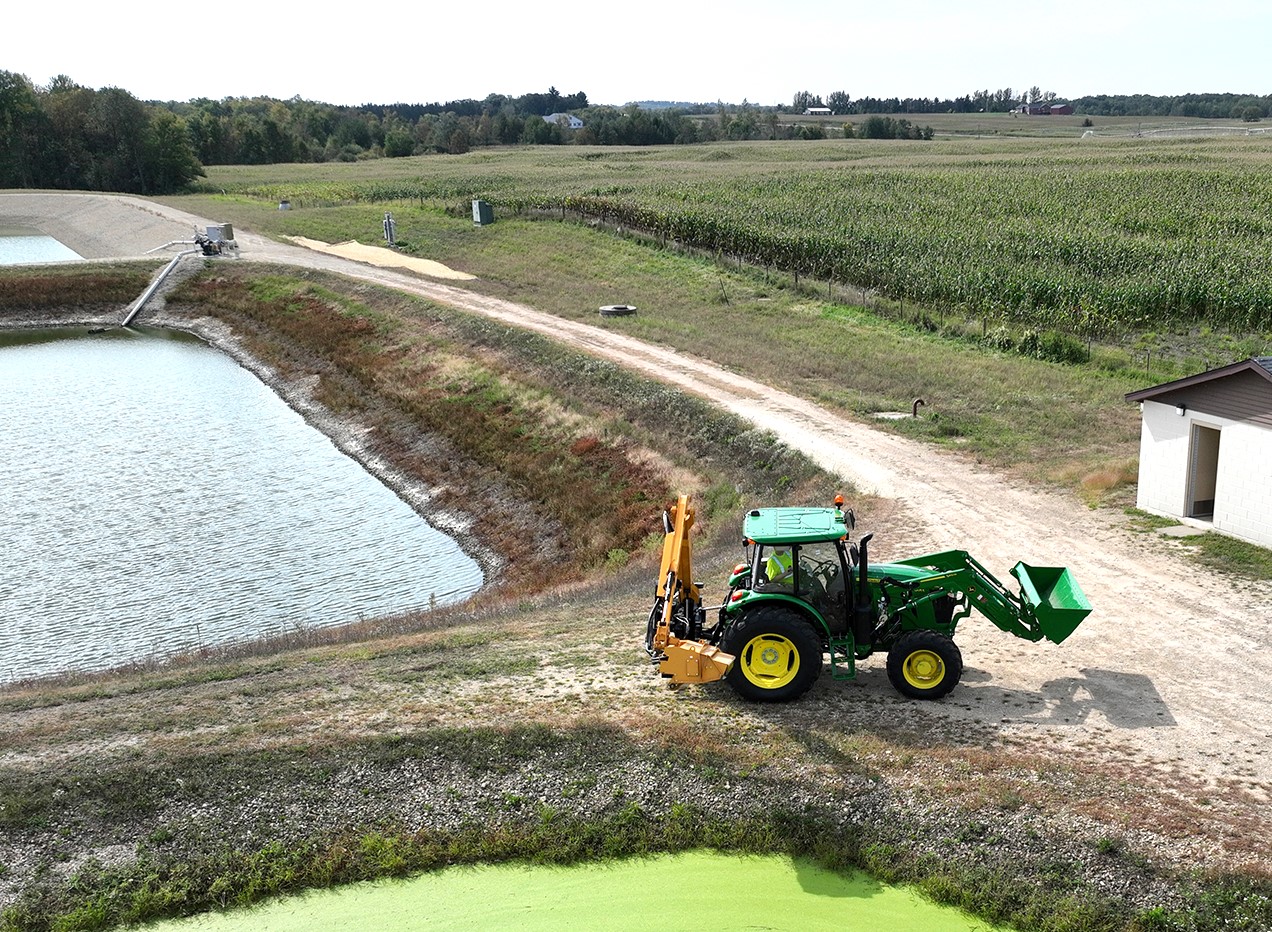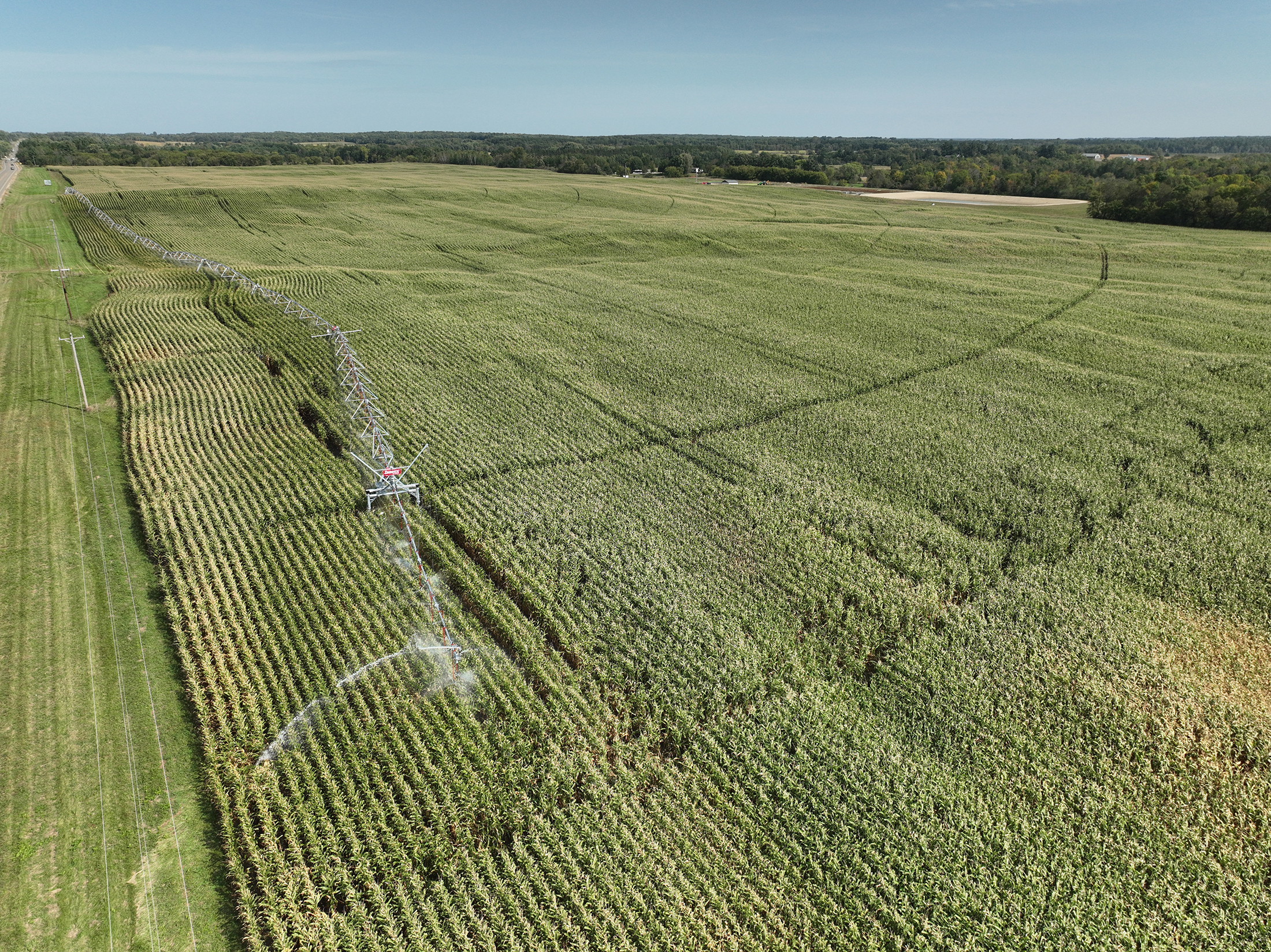The small village of Deer Park in northwestern Wisconsin faced stringent effluent limits for phosphorus in their discharge to the Willow River. To meet the proposed limit, the village of less than 200 people was faced with the decision to convert its existing aerated pond treatment facility to a mechanical facility — a project that carried an overwhelming cost to build, operate, and maintain.
What Deer Park really needed was a practical solution that a part-time operator could manage. MSA proposed and designed an effluent water reuse solution that would ultimately benefit both the village as well as a local dairy farmer. The system includes spray irrigation of treated effluent from the aerated pond facility, which provides a cost-effective reuse of the effluent for beneficial nutrient application.

The local farmer owns an 80-acre parcel of land adjacent to the Deer Park wastewater treatment facility that is planted with corn or hay for dairy cattle feed. The landowner was looking to install an irrigation system for the land to increase crop yield. Through a cooperative agreement, the village and landowner shared in the cost of the irrigation system and both parties now share in the benefits. The farmer receives free water, and the Village is able to dispose of effluent in a safe and cost-effective manner. The solution also removes wastewater discharge from the Willow River, thereby protecting water quality.

The village and farmer can also mutually operate the equipment. Each has the ability to activate the irrigation pumps and pivot or reposition equipment through a remote control and monitoring system.
To accommodate the irrigation season, additional effluent storage in the form of a holding pond was needed for the months when crops are not actively growing. To provide space for this additional effluent storage, the Village had to acquire four acres of land from a second landowner near the treatment facility as well as obtain a piping easement from the dairy farmer. MSA’s land acquisition and surveying teams provided the Village with services needed to obtain the land parcel and easement.
The result is a sustainable, cooperatively owned and operated irrigation system that satisfies the needs of both the municipality as well as the local farmer — a creative and practical solution that saved the community critical time and resources.

